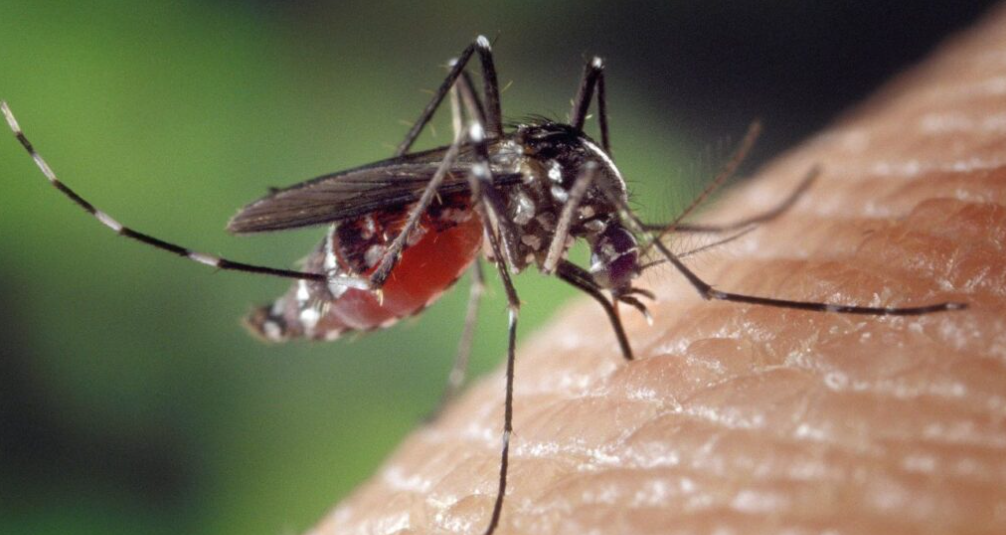West Nile fever: 17 people hospitalised in Kyiv, three dead
30 August 2024 17:19
In Kyiv, 17 people have been hospitalised with West Nile since the beginning of summer. Three of them died. This was reported by "Komersant Ukrainian" with reference to the Kyiv City State Administration.
According to Valentyna Ginzburg, director of the Kyiv City State Administration’s Health Department, since 1 June, 17 patients with a confirmed diagnosis of West Nile fever have been admitted to St Michael’s Clinical Hospital in the capital.
According to her, there are 10 men and 7 women among them.
“These are residents of different districts of the capital, two of them are residents of Kyiv and Cherkasy regions. They needed inpatient treatment due to the severity of their condition. Unfortunately, doctors were unable to save three patients due to a severe complication of fever – meningoencephalitis,” the statement said.
The Kyiv City State Administration reminded that in Ukraine, West Nile virus is classified as a group I especially dangerous disease and, according to WHO international standards, belongs to the IV risk group. The virus is similar to others that cause encephalitis and Dengue virus.
The main source and reservoir of the virus in nature are birds, mainly migratory birds, in whose blood the virus can circulate for 14 to 200 days. Certain species of mosquitoes can also transmit the disease, which become infected while feeding on blood and can transmit the virus to humans or animals. Contact infection with the blood of sick animals is extremely rare.
West Nile fever begins acutely with chills and a rapid rise in body temperature, accompanied by symptoms of intoxication. The febrile period lasts from 2 to 6 days. In severe forms, meningitis or encephalitis can develop.
According to Ginzburg, there is currently no specific therapy for this disease, and its treatment is symptomatic. At the first sign, you should consult a doctor and be treated under the supervision of a specialist, reporting all changes in your condition.
“To reduce the risk of West Nile, it is recommended to install mosquito nets, use repellents and wear clothing that covers the body when visiting parks and forest areas. As the air temperature drops and mosquitoes disappear, the risk of fever is reduced to almost zero,” she concluded.

Earlier it was reported that the first death from West Nile fever was recorded in Ukraine.
In July and August, cases of West Nile were recorded, in particular, in Kyiv, Poltava and Kyiv, according to the Regional Centre for Disease Control and Prevention.
They add that the number of cases of this infection has increased this year due to climate change and the expansion of the vector’s habitat.
What is known about West Nile fever
West Nile haemorrhagic fever is a dangerous viral infection transmitted by mosquito bites. In severe cases, it can be accompanied by fever, inflammation of the membranes and brain substance, swollen lymph nodes, mucous membrane lesions, and skin rashes.
The disease is now widespread in many countries in Africa, Asia, and the Mediterranean region. Separate outbreaks have been recorded in Central Asia (Kazakhstan, Turkmenistan, Tajikistan), the Transcaucasus (Azerbaijan, Armenia), as well as in the United States, Canada, Mexico, Central America and the Caribbean, Australia, Russia and Ukraine.
An infected person is not a source of infection. To date, there have been no documented cases of human-to-human transmission through safe contacts or infection of healthcare workers, provided that standard infection control measures are followed.
The main source and reservoir of the virus in nature are 17 species of mainly migratory birds, which can carry the virus in their blood for up to two weeks. Some small mammals, rodents, and bats can also be carriers, but the virus remains in them for a much shorter time and in lower concentrations.
The carriers of the disease are various types of mosquitoes that become infected while feeding on the blood of infected birds. Through mosquito bites, the virus can enter the body of humans and animals, where it can multiply and cause disease. Very rarely, contact infection through animal blood can occur. A very small number of human infections occur during organ transplants, blood transfusions, breastfeeding or mother-to-child transmission.
Symptoms of West Nile fever
The incubation period is from 1 to 7 days, and in people with reduced immunity up to 2 weeks. The disease manifests itself in two forms – febrile and neuroinvasive. In the vast majority of people, the infection is asymptomatic, but in 20% of patients, the first manifestations of the disease resemble the flu. Conjunctivitis. Scleritis. Body temperature rises, headache, sore throat, cough, muscle, joint, back pain, nausea, diarrhoea, skin rash, liver and spleen may be enlarged (febrile form).
When the central nervous system is affected, meningitis develops (severe headache, fever, vomiting, with severe intoxication), encephalitis (severe headache, fever, severe intoxication, confusion, convulsions, paresis, paralysis (neuroinvasive form). In such cases, the disease is severe. The mortality rate is from 3 to 10%.
Prevention of West Nile fever
To protect against West Nile disease in endemic regions, comprehensive measures are taken to reduce the number of mosquitoes (e.g., draining swamps).
Individual prevention includes wearing protective clothing, installing mosquito nets on windows and using repellents.
Treatment
There is no specific treatment for the disease, and no vaccine has been developed to prevent human infection.
Pathogenetic and symptomatic treatment is used. Infusion therapy is used to relieve the intoxication syndrome. In case of signs of cerebral edema, dehydration is performed, and anticonvulsants and sedatives are prescribed in case of seizures.
History
The virus was discovered in 1939. The most serious outbreak of the disease in Europe occurred in 1996-1997 in Romania, when about 5,000 people fell ill. In 1999, the virus was introduced to New York, after which it spread throughout the continental United States. In 2018, outbreaks of the disease were observed in many European countries, with Serbia, Italy, Greece, Hungary and Romania being the most affected.









